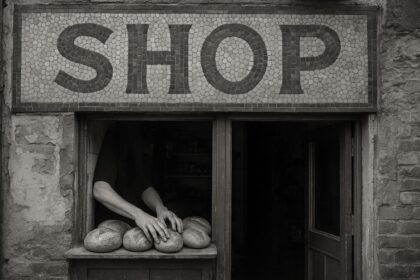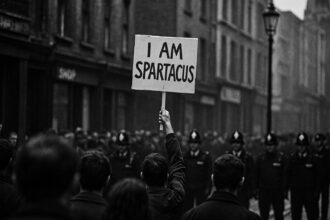WARC’s new ‘Creative Impact Unpacked’ report highlights the challenges marketers face in maintaining brand consistency across fragmented media while urging a balance of creativity and flexibility. It exposes the costly risks of weak creative efforts and the growing ‘C-suite gap’ in championing brand creativity, offering actionable insights from Cannes Lions 2025 to build resilience and commercial success.
WARC, the global authority on marketing effectiveness, has released its latest report titled ‘Creative Impact Unpacked,’ highlighting key themes discussed during the Creative Impact content stream at Cannes Lions 2025. Now in its third year, Creative Impact serves as the central platform for exploring how creativity drives brand resilience and commercial success amid the complexities of today’s fragmented media landscape.
The report underscores the critical importance of consistency in marketing strategies. As David Tiltman, Chief Content Officer at WARC, explains, the enduring power of a creatively consistent idea—repeated and refreshed over time—remains key to building impactful brands. However, achieving this consistency poses a significant challenge in 2025, given the fragmented media environment and organisational silos, compounded by an increasing presence of creators offering alternative communication channels. Despite these hurdles, the report outlines practical approaches for maintaining integration and consistency across diverse media platforms.
One of the standout themes from the report is the “C-suite gap” that marketers face when trying to champion creative brand-building at the executive level. New research suggests that positioning brand strength as a risk mitigator can help bridge this gap. Karen Crum from EY Parthenon recommends highlighting how strong brands recover more quickly from crises and how underinvestment in brand creativity risks long-term commercial performance. Further reinforcing this, studies cited in the report reveal that weak creative efforts in low-quality media environments can cost businesses as much as 43 cents on every advertising dollar—a staggering cost estimated at $198 billion industry-wide. Conversely, companies recognised for creative excellence at Cannes Lions outperformed average EBIT by 2.7% annually and achieved a 4.7% higher market capitalisation. Marketers are also encouraged to shift focus from narrow channel-level returns on ad spend (ROAS) to portfolio-level ROAS, enabling a broader view of marketing effectiveness across purchase funnels.
The report delves into the “consistency versus lots of little” dilemma, highlighting the complexity posed by media fragmentation and algorithmic content delivery. Research presented by experts like Dr Grace Kite and Tom Roach reveals that inconsistent emotional impact across channels can reduce overall effectiveness. However, exposure across multiple media, even if brief, can still create valuable brand synergy. Brands such as McDonald’s and Desperados exemplify a strategic shift from rigid “matching luggage” marketing—where all elements must closely align visually and thematically—to more adaptive “brand universes” that maintain core brand codes while allowing creative flexibility and cultural relevance. This approach empowers content creators with a “freedom within a framework,” striking a balance between consistency and contextual adaptation. Alongside this, the report emphasises the need for flexibility in marketing processes, advocating for experimentation alongside tried-and-tested tactics, as seen in brands like Duolingo, which dedicates a significant portion of its budget to innovative testing while maintaining brand coherence through distinctive elements like its mascot.
Another vital trend addressed by the report is the need for “unshittification”—a term describing the process of aligning marketing promises with customer experience to prevent a decline in service quality or brand perception. Gap CEO Richard Dickson illustrates this by detailing the retailer’s transformation through dismantling siloed structures and creating a unified services group. This integration enabled consistent brand storytelling across all touchpoints, from digital interactions to physical stores. Similarly, marketers are encouraged to prioritise emotional resonance over mere operational efficiency to create memorable experiences. For instance, Sephora’s product sampling is highlighted as a key emotional touchpoint that builds brand loyalty. Meanwhile, Latin American e-commerce giant Mercado Libre’s focus on transforming delivery uncertainty into an emotional brand moment—captured by its tagline “Lo mejor está llegando” (“The best is coming”)—demonstrates how logistics can become a significant element of brand equity.
Complementary insights from broader Cannes Lions research paint a picture of an industry grappling with a “crisis of distinctiveness.” Reports reveal that a majority of brands suffer from weak recognition in their advertisements, with 65% showing little to no strong associations and 85% of ads failing to maintain audience attention beyond 2.5 seconds. This signals a worrying waste of marketing spend and a need for brands to build clearer, more memorable identities to stand out in a crowded marketplace. Additionally, only a minority of companies are truly creative risk-friendly, while many brands struggle to react rapidly to cultural shifts—factors that can hinder bold, impactful creativity.
In the evolving marketing landscape highlighted at Cannes Lions 2025, there is also a notable emphasis on blending technology with authentic human insight. Successful campaigns leverage AI not as a replacement but as a tool to enhance genuine creativity and community engagement. The fusion of commerce and creativity is moving beyond mere transactions to foster more human, helpful, and culturally relevant experiences that resonate deeply with audiences.
Overall, the ‘Creative Impact Unpacked’ report from WARC offers a nuanced roadmap for marketers seeking to harness creativity effectively. By bridging gaps with the C-suite, balancing consistency with flexibility, tackling the quality of customer experience head-on, and embracing a human-centric approach to technology and commerce, brands can build resilience and sustainable growth in an increasingly complex and fragmented world.
 Reference Map:
Reference Map:
- Paragraph 1 – [1], [2]
- Paragraph 2 – [1], [2], [4]
- Paragraph 3 – [1], [2]
- Paragraph 4 – [1], [2], [7]
- Paragraph 5 – [1]
- Paragraph 6 – [1], [4], [6]
- Paragraph 7 – [3], [5]
Source: Noah Wire Services
- https://www.adobomagazine.com/press-release/creative-impact-unpacked-warcs-top-effectiveness-trends-from-cannes-lions-2025/ – Please view link – unable to able to access data
- https://www.warc.com/content/feed/creative-impact-unpacked-what-we-learned-at-cannes-lions-2025/10724 – WARC’s ‘Creative Impact Unpacked’ report from Cannes Lions 2025 highlights key trends in marketing effectiveness. It discusses the importance of consistency in brand-building, the challenges posed by media fragmentation, and the need for brands to adapt to cultural moments. The report also addresses the role of creators in marketing and the necessity for brands to align their marketing promises with customer experience to avoid ‘enshittification’.
- https://www.canneslions.com/news/lions-releases-the-state-of-creativity-2025 – LIONS’ ‘The State of Creativity 2025’ report reveals that only 13% of companies are creative risk-friendly, with half of brands admitting their insights are too weak to develop bold creativity. Over half of brands struggle to react quickly to cultural moments. The report emphasizes the need for brands to invest in high-quality insights and cultural agility to boost creative confidence and drive better long-term business results.
- https://www.marketing-beat.co.uk/2024/06/28/warc-creative-impact-report/ – Marketing Beat discusses WARC’s ‘Creative Impact’ report, highlighting a ‘crisis of distinctiveness’ in branding. The report notes that 65% of brands have weak to no associations with their advertisements. It also points out that 85% of ads do not meet the attention memory threshold of 2.5 seconds, leading to wasted spend. The article emphasizes the need for brands to build distinctiveness and clarity in their marketing efforts.
- https://www.wpp.com/en/wpp-iq/2025/06/cannes-lions-2025-key-trends-and-themes – WPP’s analysis of Cannes Lions 2025 focuses on the search for the human touch in a world saturated with AI-generated content. The report highlights campaigns that demonstrate how technology can amplify genuine human insight. It also discusses the importance of creators and communities in captivating new audiences and how commerce is evolving to fuse with creativity, moving beyond transactions to create more human and helpful experiences.
- https://mot-backup.campaignme.com/new-report-reveals-insights-from-cannes-creative-effectiveness-lions/ – Campaign Middle East reports on insights from Cannes Lions 2024, highlighting a ‘crisis of distinctiveness’ in branding. The report notes that 65% of brands have weak to no associations with their advertisements. It also points out that 85% of ads do not meet the attention memory threshold of 2.5 seconds, leading to wasted spend. The article emphasizes the need for brands to build distinctiveness and clarity in their marketing efforts.
- https://www.canneslions.com/news/cannes-lions-sets-the-stage-for-2025 – Cannes Lions announces the 2025 Content programme, featuring the Creative Impact stream co-curated with WARC. The programme includes seminars such as the Creative Marketer of the Year with Apple’s Tor Myhren and Duolingo’s ‘The Tech Marketer’s Playbook’ with CMO Emmanuel Orssaud. It also highlights CMOs in the Spotlight, including McDonald’s Morgan Flatley and Heineken Brazil’s Cecilia Bottai-Mondino, who will share their experiences in leading some of the world’s most recognisable brands.
Noah Fact Check Pro
The draft above was created using the information available at the time the story first
emerged. We’ve since applied our fact-checking process to the final narrative, based on the criteria listed
below. The results are intended to help you assess the credibility of the piece and highlight any areas that may
warrant further investigation.
Freshness check
Score:
10
Notes:
The narrative is fresh, published on June 27, 2025, with no evidence of prior publication or recycling. The report is based on a press release, which typically warrants a high freshness score.
Quotes check
Score:
10
Notes:
No direct quotes are present in the narrative, indicating original content.
Source reliability
Score:
10
Notes:
The narrative originates from WARC, a reputable organisation known for its authority on marketing effectiveness.
Plausability check
Score:
10
Notes:
The claims made in the narrative are plausible and align with known industry trends. The language and tone are consistent with professional marketing communications.
Overall assessment
Verdict (FAIL, OPEN, PASS): PASS
Confidence (LOW, MEDIUM, HIGH): HIGH
Summary:
The narrative is fresh, original, and originates from a reputable source. The content is plausible, with no signs of disinformation or recycled material.













